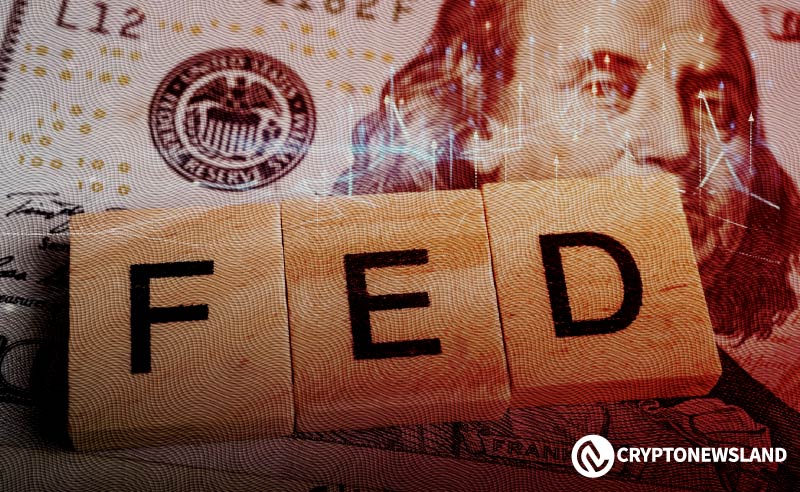- The Fed Funds Rate dropped for the third straight month, showing a shift in monetary policy.
- M2 Money Supply is recovering after months of decline, suggesting early signs of economic liquidity.
- Analysts see patterns linking rate pauses to future quantitative easing actions in 2025.
The Federal Reserve’s Fed Funds Rate declined for the third consecutive month in January 2025. Simultaneously, the M2 Money Supply showed early signs of recovery, hinting at potential monetary policy shifts. Analysts speculate that this trend could precede a new phase of quantitative easing (QE) to address stagnation risks.
M2 Money Supply Shows Recovery Signs
The M2 Money Supply, which includes cash and convertible deposits, ticked upward after months of contraction. Analysts view this shift as a response to easing policies.
In 2022 and 2023, the M2 Money Supply contracted significantly, reflecting tightening liquidity. However, the slight uptick in January 2025 aligns with declining interest rates.
This trend mirrors historical patterns, where liquidity expansion followed rate reductions. Notably, in 2019, the Federal Reserve paused rate hikes before initiating QE programs.
Could This Signal Another QE Era?
The chart, shared by market analyst MartyParty, highlights parallels between current trends and previous Fed actions before QE.
In 2019, a similar pause occurred before QE began during the pandemic. The analyst identified a new pause in early 2025, signaling possible monetary expansion.
The TOTAL3 measure, included in the chart, further illustrates liquidity trends that align with potential policy shifts. This suggests another significant phase of QE could be approaching.
Fed Data Reporting Sparks Concerns
Besides monetary trends, MartyParty raised concerns about delays in critical data releases by the Treasury and the Federal Reserve.
The January 2025 Fed Funds Rate data, released on February 1, faced delays, prompting questions about reporting efficiency. The analyst noted such delays could hinder timely economic decisions.
The debate underscores the importance of transparency in fiscal reporting. Could more efficient reporting improve confidence in economic policymaking?



